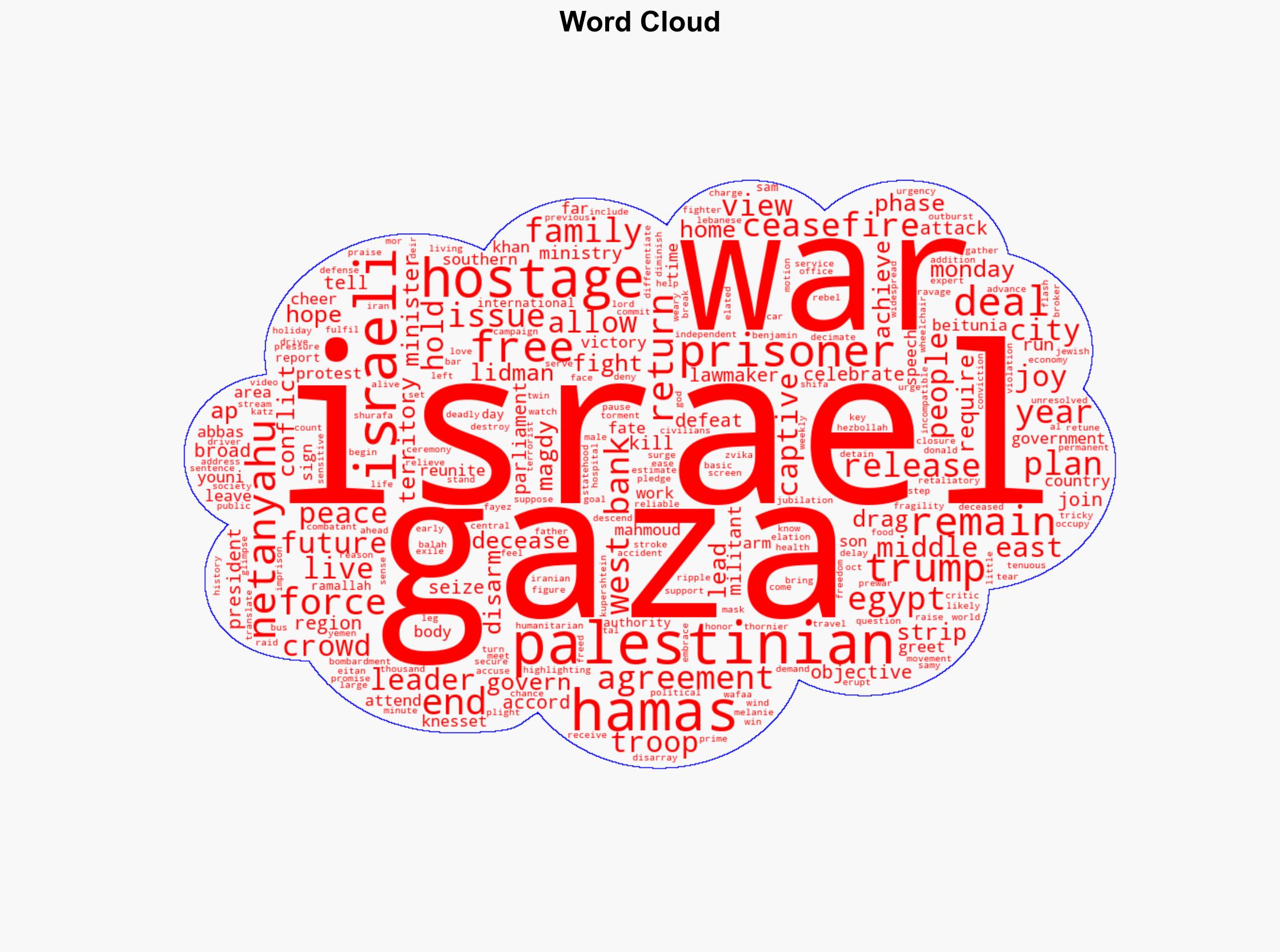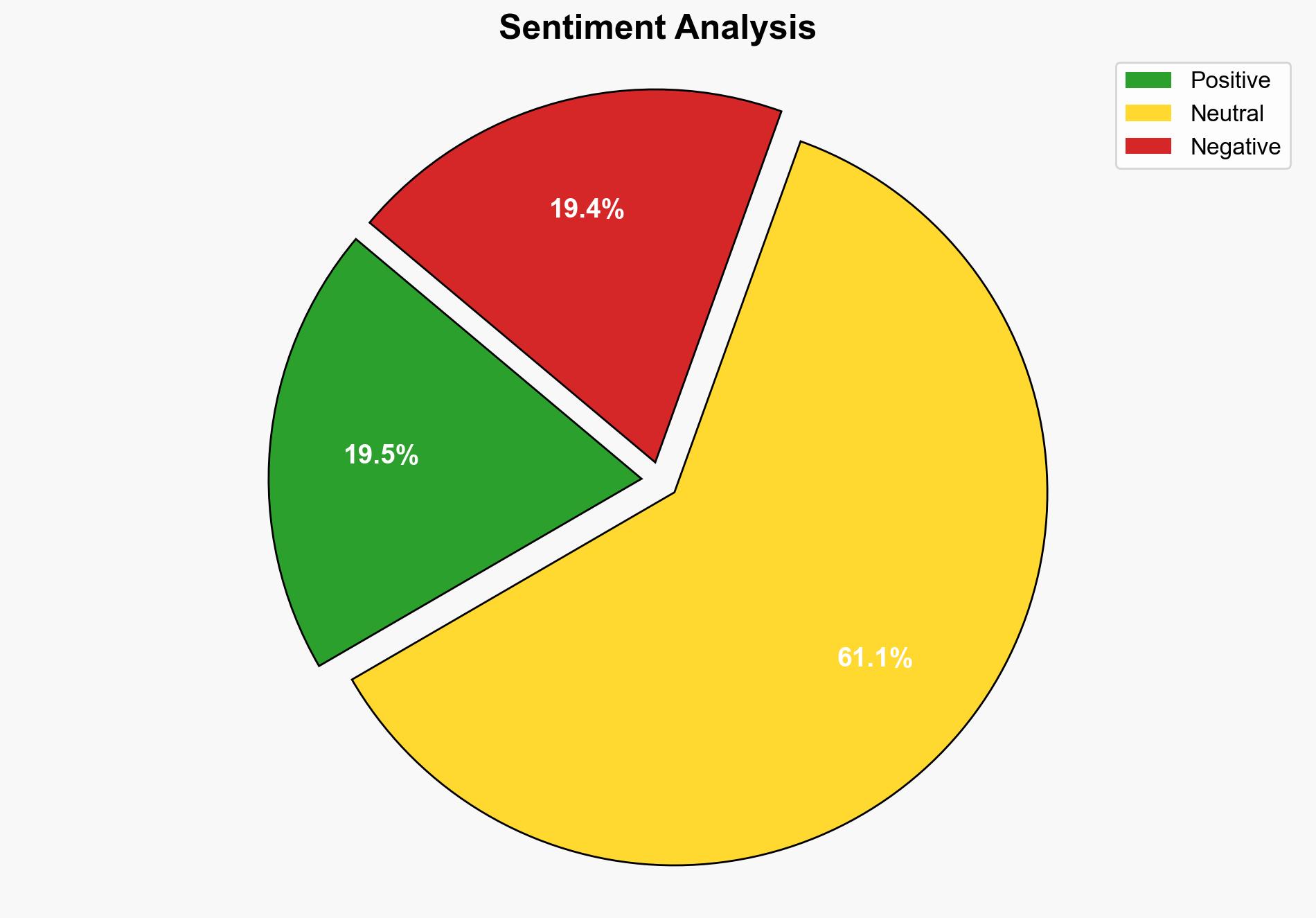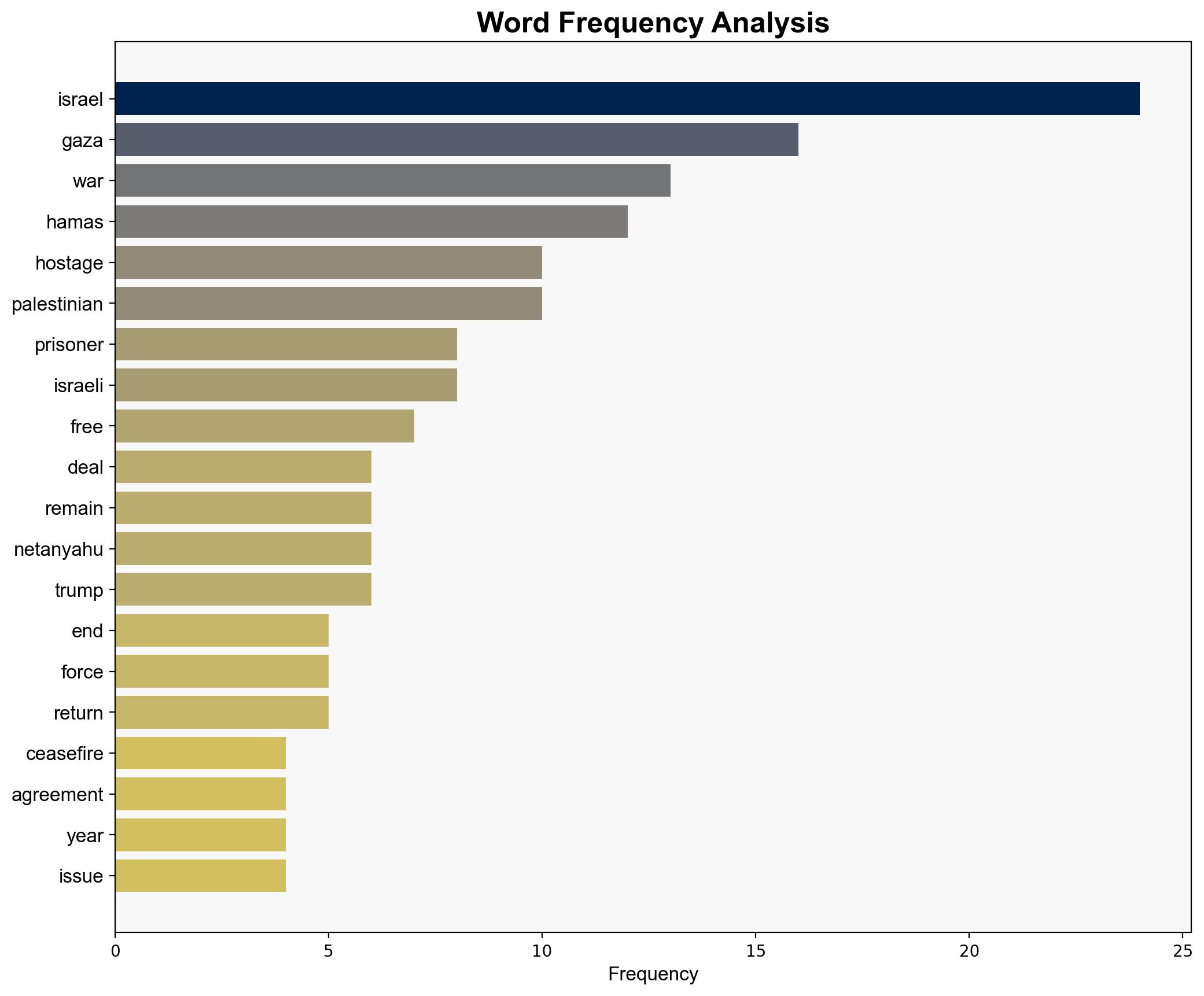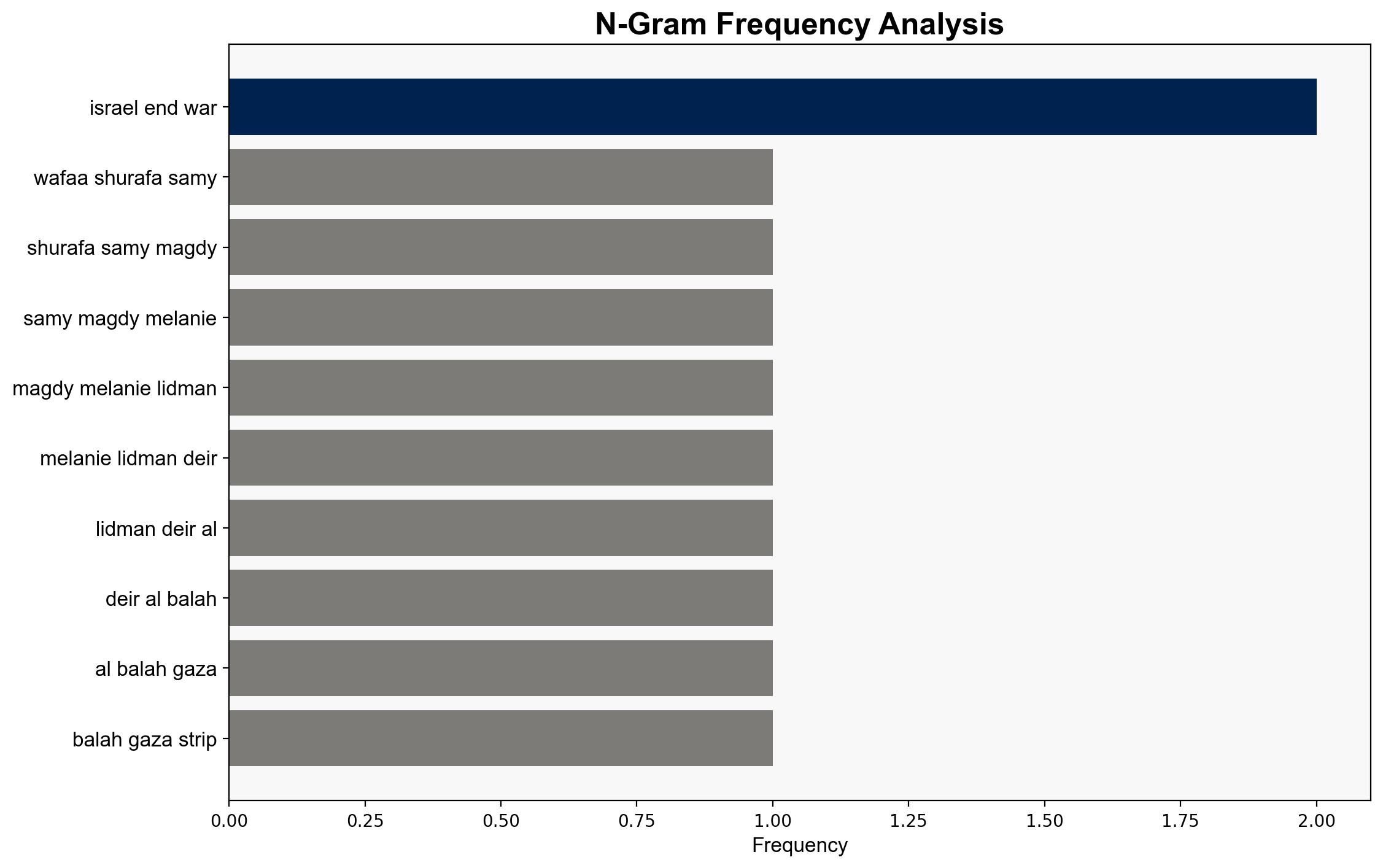An Egyptian official says 154 Palestinian prisoners released by Israel have been sent to Egypt – Boston Herald
Published on: 2025-10-13
Intelligence Report: An Egyptian official says 154 Palestinian prisoners released by Israel have been sent to Egypt – Boston Herald
1. BLUF (Bottom Line Up Front)
The release of 154 Palestinian prisoners by Israel, reportedly sent to Egypt, is a significant development in the ongoing Israeli-Palestinian conflict. The most supported hypothesis is that this move is part of a broader strategy to stabilize the region and facilitate a more permanent ceasefire, with a moderate confidence level. Recommended action includes monitoring regional reactions and preparing for potential shifts in geopolitical alliances.
2. Competing Hypotheses
Hypothesis 1: The prisoner release is a strategic move by Israel to advance peace negotiations and stabilize the region, potentially leading to a more permanent ceasefire.
Hypothesis 2: The release is a tactical maneuver by Israel to alleviate international pressure and improve its diplomatic standing, without genuine intent to pursue long-term peace.
Using ACH 2.0, Hypothesis 1 is better supported due to the context of ongoing negotiations and international involvement, such as Egypt’s mediation role. Hypothesis 2 lacks substantial evidence of immediate diplomatic gains.
3. Key Assumptions and Red Flags
Assumptions include the belief that both Israel and Hamas are committed to a ceasefire and that Egypt can effectively mediate. Red flags include potential misinterpretation of Israel’s intentions and the risk of Hamas exploiting the situation to regroup militarily. The absence of detailed terms of the prisoner release agreement is a blind spot.
4. Implications and Strategic Risks
The release could either lead to a de-escalation or be perceived as a weakness, inviting further aggression. Economic impacts may include shifts in aid and investment in the region. Geopolitically, this could alter alliances, particularly if Egypt’s role strengthens. The psychological impact on both Israeli and Palestinian populations could influence future negotiations.
5. Recommendations and Outlook
- Monitor regional responses, particularly from Hamas and other militant groups, to anticipate potential escalations.
- Engage with international partners to support Egypt’s mediation efforts and ensure transparency in the ceasefire terms.
- Scenario Projections:
- Best Case: A lasting ceasefire is achieved, leading to broader peace negotiations.
- Worst Case: The release is exploited by Hamas, leading to renewed hostilities.
- Most Likely: Temporary stabilization with ongoing low-level tensions.
6. Key Individuals and Entities
– Benjamin Netanyahu
– Donald Trump
– Mahmoud Fayez
7. Thematic Tags
national security threats, regional focus, conflict resolution, diplomacy





